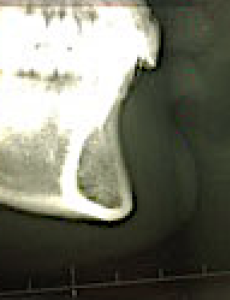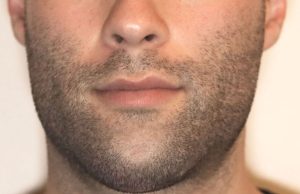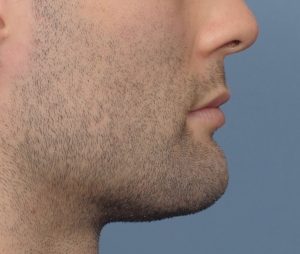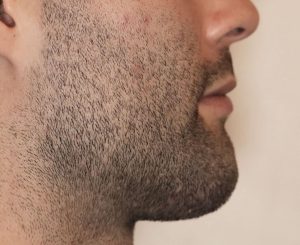Background: The chin as a projecting facial structure has three dimensions. Of these dimensions horizontal projection is the most commonly seen and pursued by patients. Almost every chin implant is based on producing pure horizontal augmentation. The sliding bony genioplasty has fixation plates of various lengths that similarly are designed for increasing horizontal projection.
A frequently overlooked chin dimension is vertical length or height of the chin. It can be too short or too long but in either case there are associated soft tissue ‘deformities.’ In the vertically long chin the soft tissue chin pad may look pulled down or too low. Conversely in the vertically short chin the soft tissue chin pad may look compressed or bunched up. This is usually seen as the chin pad points upward above the projection of the bone rather than right over it.
In correction of the vertically short chin the options are to either add an implant onto the bone or to lengthen the actual bone. That choice depends on how much chin lengthening is needed and what the overlying softy tissue chin pad looks like. When significant vertical chin lengthening is needed (more than 6 to 7mms) and/or there is excessive/redundant overlying soft tissue chin pad the correct approach is bone lengthening.



Because the inferior attachments of the chin pad remain attached in bony lengthening as the chin moves downward the soft tissue pad will follow with it. In effect it stretch/pulls the soft tissues downward.
Case Highlights:
1) The upturned soft tissue chin pad is a mismatch between the amount of underlying bone and the enveloping/overlying soft tissue.
2) To stretch down the upturned soft tissue chin pad the underlying bone must be elongated to pull it down.
3) Significant vertical elongation of the chin can only be achieved by a bone lengthening procedure with an interpositional bone graft.
Dr. Barry Eppley
World-Renowned Plastic Surgeon







